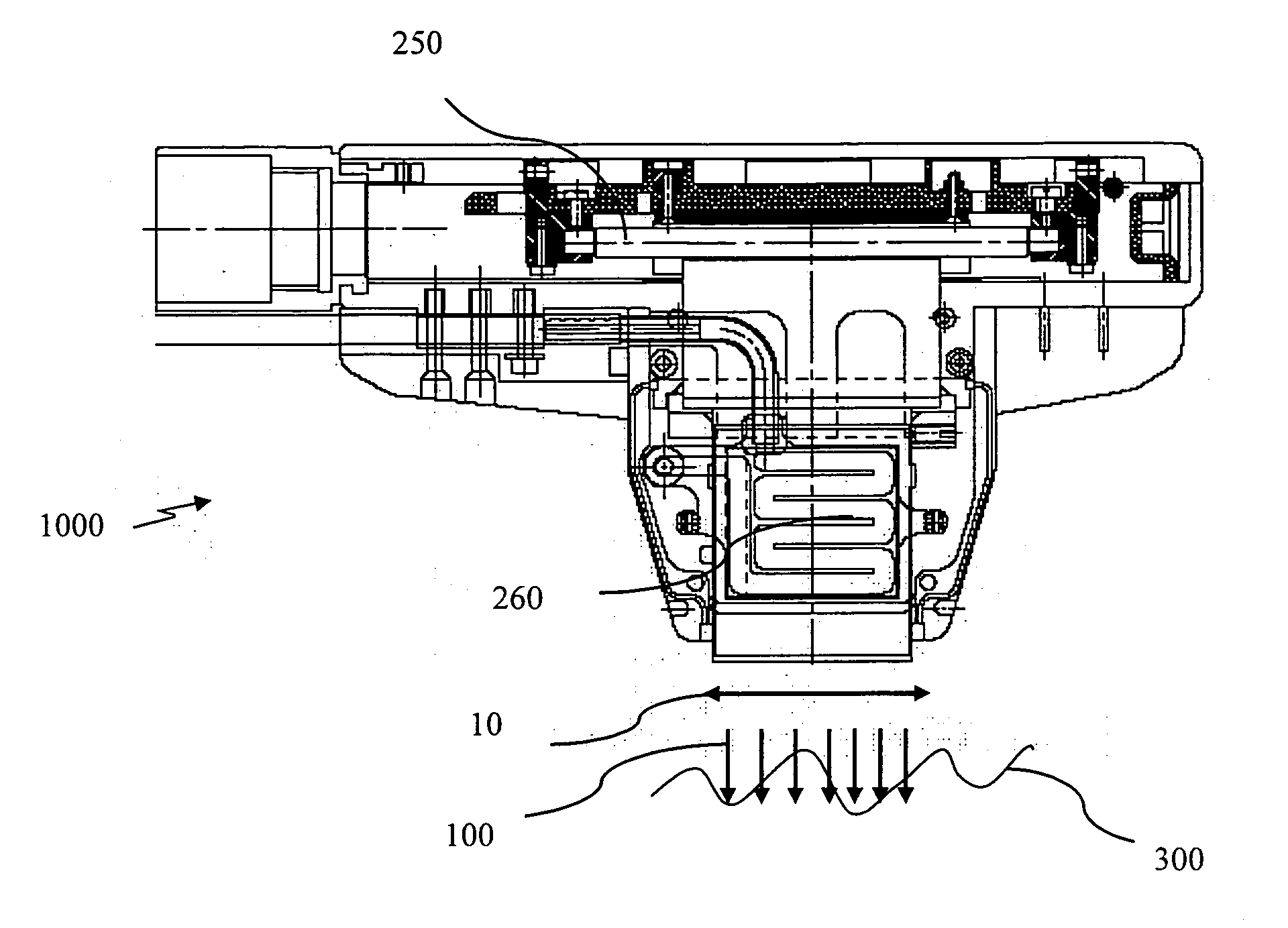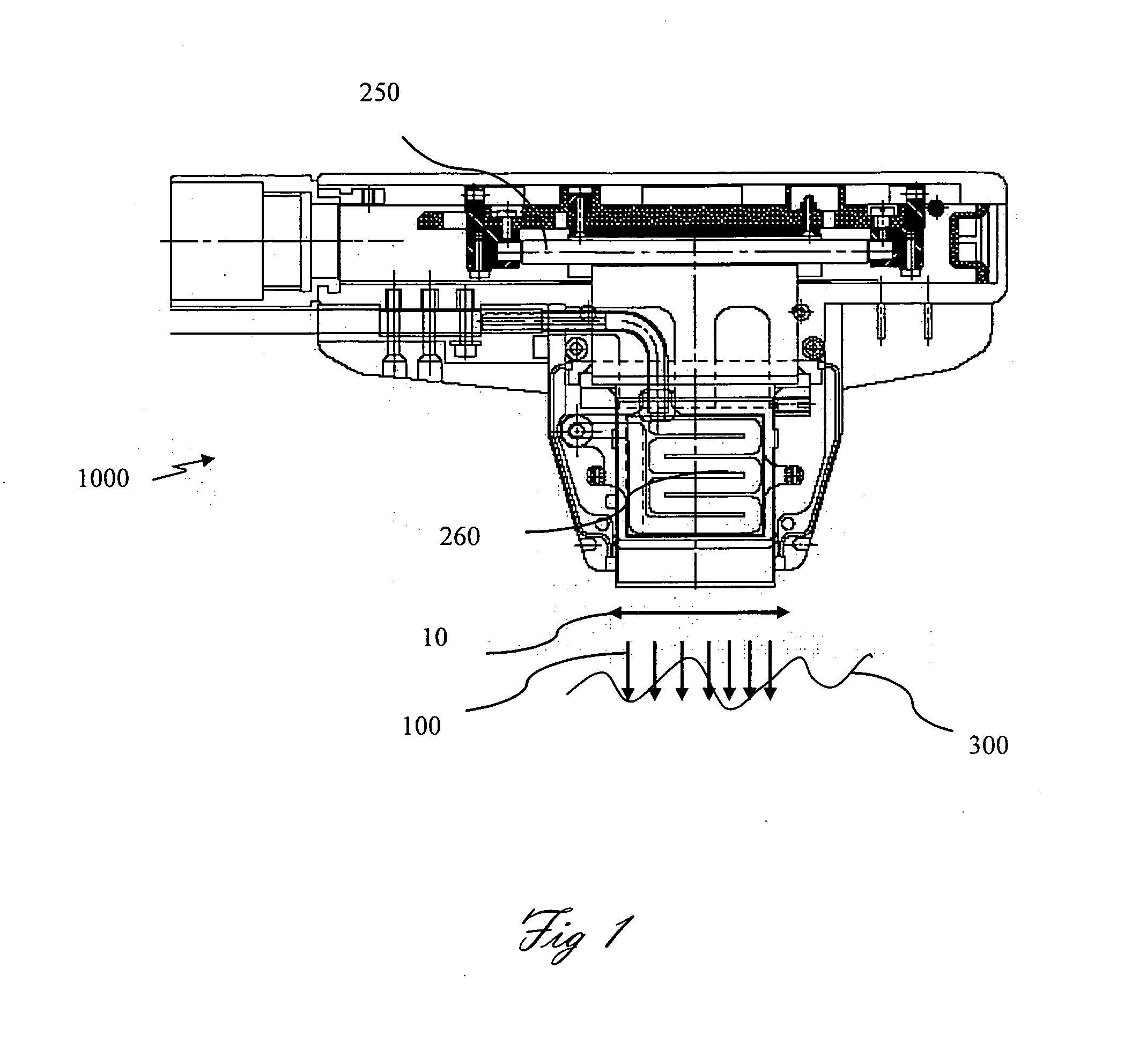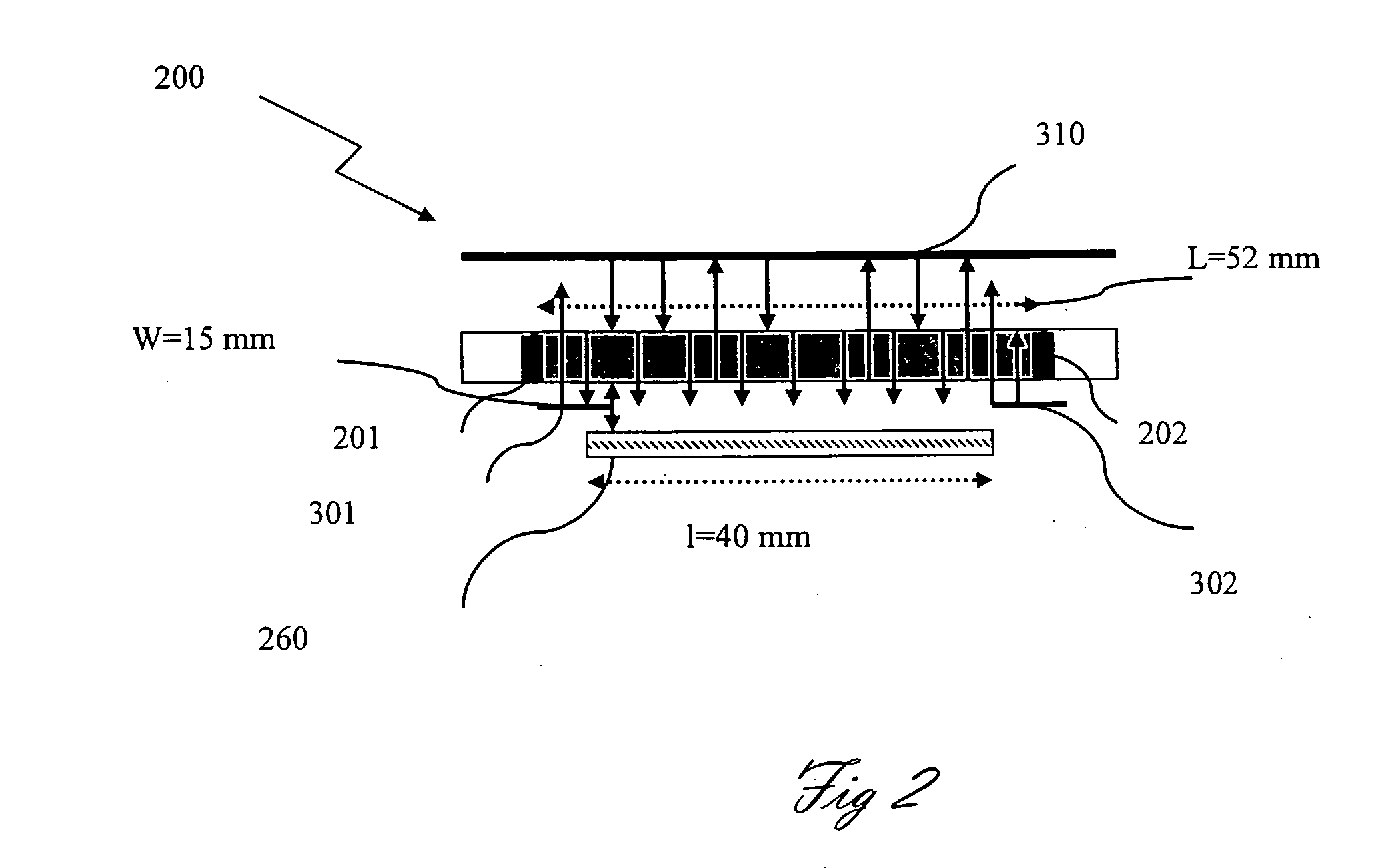Multi-broadband pulse emitter and a method for applying an effective dermal treatment
a pulse emitter and broadband technology, applied in the field of multi-broadband pulsed light emitters, can solve the problems of limiting the efficiency of treatment, affecting the effect of treatment, and causing unwanted and dangerous heating of such tissue, and achieves the effect of avoiding excessive skin overheating, reducing the amount of applied light energy, and reducing the risk of cancer
- Summary
- Abstract
- Description
- Claims
- Application Information
AI Technical Summary
Benefits of technology
Problems solved by technology
Method used
Image
Examples
example 1
[0061]The treatment of stretch marks is performed in patients with all skin types. For stretch marks treatment, the infrared light lies in the range from 800 nm to 1,800 nm, the energy density used is 31 J / cm2. The light pulses may be applied in differently chopped modes at durations of 500 ms to 3.000 ms in total. All treatments are applied via single handpiece with a spot size of 6 cm2 (40×15 mm) with no need of filters. An aggressive active contact skin cooling at +5° C. is activated to avoid any epidermal injury being in any skin photo types. The particular burst mode, which can be modified by a simple operation on the software, chops the pulse into a series of mini pulses. Burst pulse widths are of 3 ms to 6 ms, with 20 ms interval between pulses at 0.5 Hz.
[0062]On clinical examination and standardized photography an improvement in width from 0 to 30% is observed. Three-dimensional in vivo optical skin imaging assessed anisotropy of micro relief before and at the fourth session...
example 2
[0064]An MPLE (1000) according to one embodiment of the present invention was used as non-invasive skin tightening protocol in periorbital areas. The infrared light lies in the range from 800 nm to 1,800 nm. The energy densities used lies in the range of 21 J / cm2 to 45 J / cm2, in most cases 28 J / cm2 was used without local anesthesia. The light pulses may be applied in differently chopped modes at durations of 500 ms to 3.000 ms. All treatments are applied via single handpiece with a spot size of 6 cm2 (40×15 mm) with no change of filters needed. To avoid epidermal injury skin contact cooling is integrated in the hand piece, cooling the skin surface down to (−) 5° C. to +5° C. is activated to avoid any epidermal injury on all skin types. The system of the present invention is able to effectively heat up dermal layers up to 65° C. while keeping the epidermis protected with an adapted cooling system. The treatment was done with a train of pulses of 300 ms in total, with fluencies of aro...
example 3
[0066]To evaluate the efficacy on collagen remodeling, the subdermal heating generated by the aforesaid MPLE was verified. Thermocouple probes are introduced at a controlled depth in the hypodermis by thermocouple needles. At the surface of the skin, above the probe, the MPLE is activated at a high fluency of 28 J / cm2 with a train of pulses of 500 ms. An immediate response is observed between 3000 and 7000 μm. A thermal peak at 60° C. during one or two seconds in the subdermis is also observed, and the maximum pain level was 4 / 10 and never required additional topical anesthesia.
PUM
 Login to View More
Login to View More Abstract
Description
Claims
Application Information
 Login to View More
Login to View More - R&D
- Intellectual Property
- Life Sciences
- Materials
- Tech Scout
- Unparalleled Data Quality
- Higher Quality Content
- 60% Fewer Hallucinations
Browse by: Latest US Patents, China's latest patents, Technical Efficacy Thesaurus, Application Domain, Technology Topic, Popular Technical Reports.
© 2025 PatSnap. All rights reserved.Legal|Privacy policy|Modern Slavery Act Transparency Statement|Sitemap|About US| Contact US: help@patsnap.com



